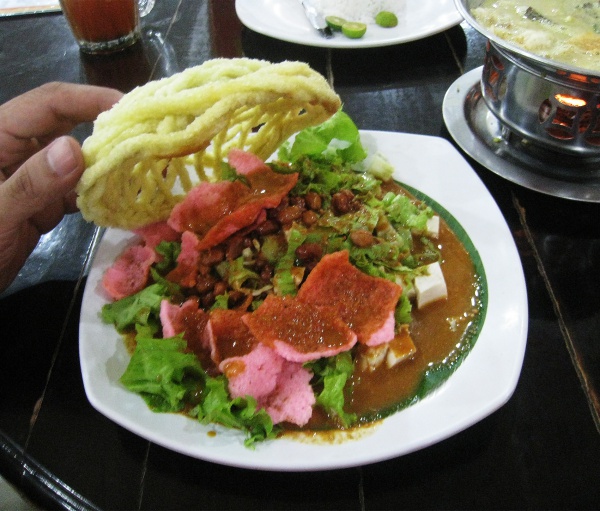Facts About Asinan
Asinan is a delightful traditional dish from Indonesia that involves pickling vegetables or fruits. The name itself is derived from the Indonesian word "asin" meaning "salty" reflecting the preservation method where ingredients are soaked in a saline solution. Think of it as a cousin to rujak, but while rujak is served fresh, asinan is all about preserved flavors.
There are a couple of popular types of asinan worth noting: Asinan Betawi and Asinan Bogor. Each offers its unique twist and regional flair.
Asinan Betawi originates from Jakarta and features a mix of preserved Chinese cabbage, regular cabbage, bean sprouts, tofu, and lettuce. This vegetable medley is drenched in a thin, spicy peanut sauce with a splash of vinegar. It is then garnished with crunchy peanuts and krupuk (a type of Indonesian cracker).
Conversely, Asinan Bogor, from the city of Bogor in West Java, is all about tropical fruits. Imagine a medley of raw mango, water apple, papaya, ambarella, jicama, nutmeg, and pineapple. These fruits are bathed in a sweet, spicy, and sour vinegar and chili sauce, with a sprinkle of peanuts for added crunch.
The term "asinan" translates to "salty food" a fitting name given the preserved nature of the vegetables or fruits. In Surabaya, a similar dish is called "sayur asin" meaning "salty vegetable." Typically, asinan includes ingredients like cabbage, cucumber, salt, bean sprouts, chili, and terasi (a type of shrimp paste), somewhat akin to kimchi but with a shorter salting process.
There are two main types of asinan: asinan sayur (salted vegetable) and asinan buah (salted fruit). Asinan sayur, also known as asinan Jakarta or asinan Betawi, boasts a rich history influenced by various cuisines including Indian, Chinese, Arab, Portuguese, and Dutch, as noted by food expert William Wongso.
So, next time you're exploring Indonesian cuisine, give asinan a try. Whether you opt for the veggie-packed Asinan Betawi or the fruity Asinan Bogor, you're in for a tangy, spicy treat!

 Malaysia
Malaysia